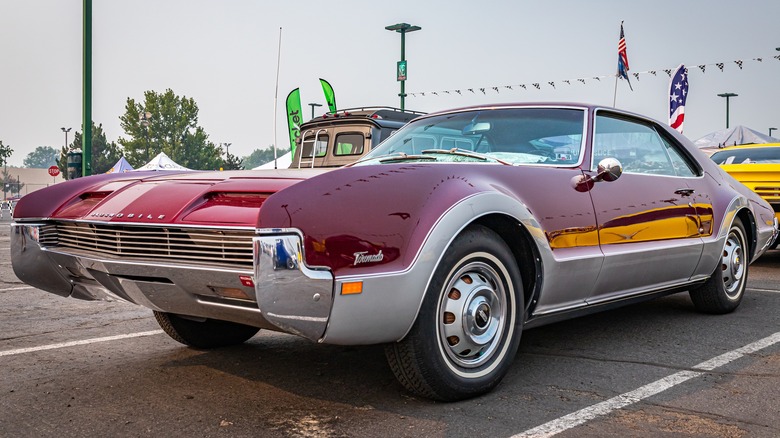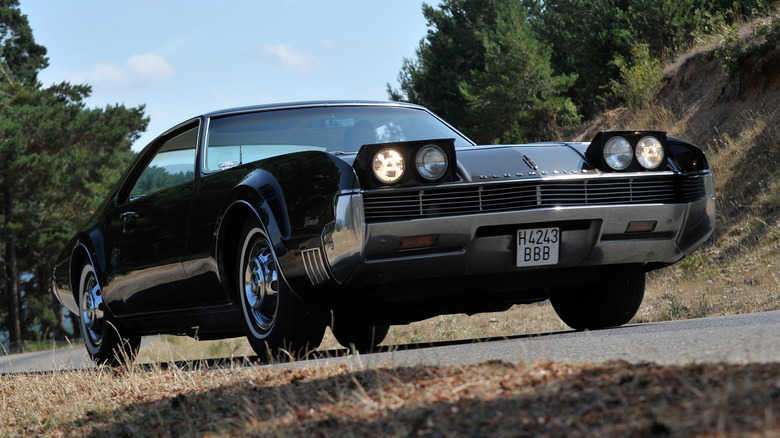How Oldmobile's 1966 Toronado Broke New Ground
When the Oldsmobile Toronado arrived in 1966, it had instant classic written all over it. Its daring low-slung design was inspired by a painting by Oldsmobile's assistant chief designer at the time, David North, and it represented quite a departure from most personal luxury coupes of the time.
It also featured what was referred to as a unitized body construction at the time, which meant the body and chassis were combined. Today, we'd call this a unibody or monocoque construction, and it brought numerous handling and weight benefits that the Toronado took full advantage of. You could drive it spiritedly, even in bad weather, which wasn't something you could easily do in a rival rear-wheel drive model.
Under its very long hood sat GM's 425 cubic-inch Rocket V8, but unlike the vast majority of cars in the 1960s, it sent its power to the front wheels. The 1966 Toronado was the first mass-produced American car with front-wheel drive since the 1936 Cord 810, one of the fastest pre-war cars, and this further helped cement its image as an utterly unique proposition in the luxury segment.
For the first year of production, the Toronado had drum brakes, which began to fade quite quickly if you really leaned on them. Oldsmobile addressed this and introduced optional vented front disk brakes in 1967. This gave it superior stopping power, which was great given that the car could easily cruise at 80 mph.
Design Defined the 1966 Toronado
One of the many design elements that made the Toro a classic was its vacuum-operated pop-up headlights that gracefully rose and fell, giving the car a stately appearance.
The long hood and uniquely shaped greenhouse appeared to melt into the lower part of the body, helping place the car's visual mass as low as possible, which received a lot of praise in its day. It's definitely a classic Olds that's worth your attention today.
With a body that has a very pronounced tumblehome design, narrowing the further up it goes, the wheel arches are very pronounced. They are so big that they seem to be an homage to car designs of the 1930s, as are the factory 15-inch wheels, which look a lot like those from a Cord 810.
Designers carried over some of the exterior's sporty elegance inside the Toronado. The car had deep, sporty-looking seats and a (small for the era) 15.5-inch steering wheel that provided an engaging drive. The steering wheel could also be adjusted for height, the seats were electrically operated, and it could even be equipped with remote-controlled mirrors.
What makes these elements special is that they didn't last long. The Toronado ended up being completely changed, and by the first generation's final year of production, 1970, even its characteristic rounded wheel wells were more squared off. This made it look quite different from the original 1966 design.

